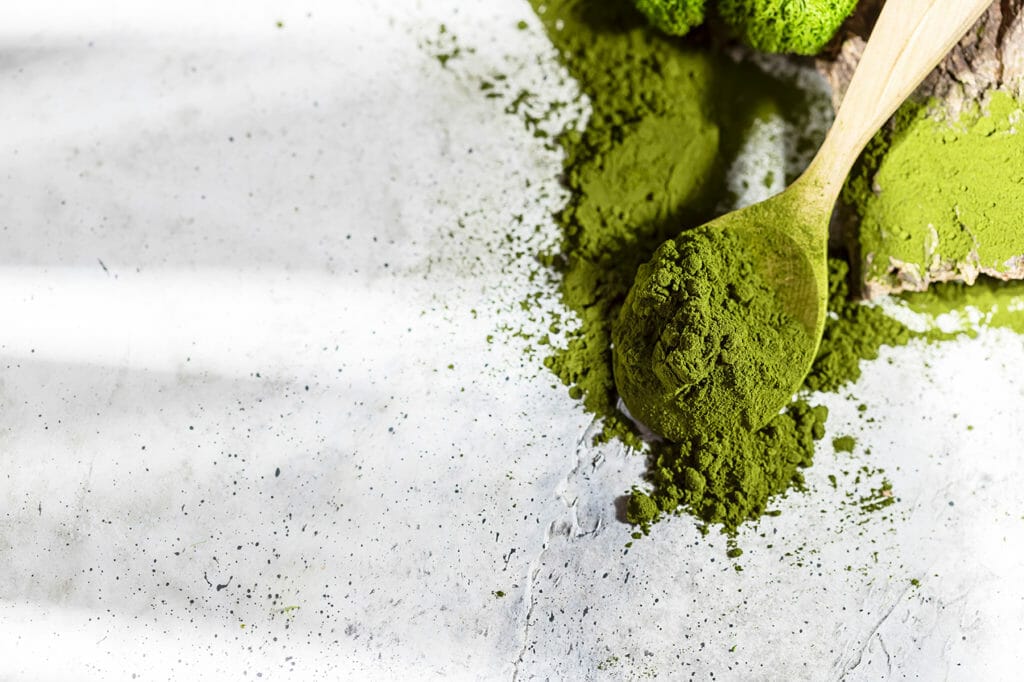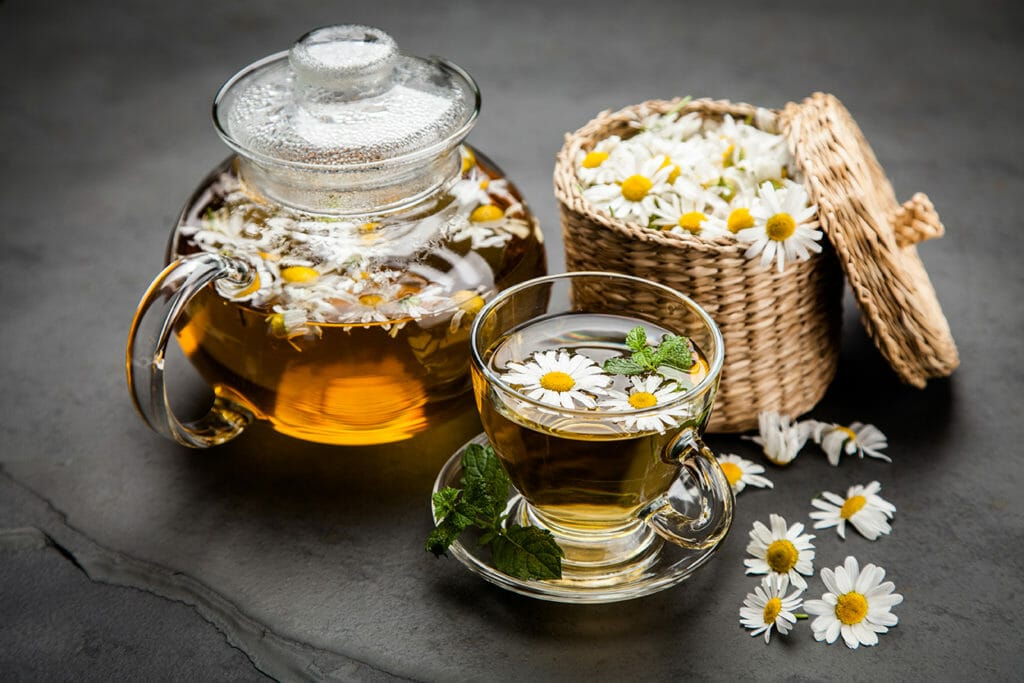Adaptogens to the Rescue and their Stress-Protective Effects
We have all experienced some level of stress or overwhelm during the pandemic and perhaps for many years before that. Recent times have sharpened our sense of the increasing struggles and the burgeoning mental health effects that seem to be surfacing more and more every day. So what is going on in our bodies as they, rather amazingly, look to try and cope with the multitude of insults thrown our way from our busy lives and societal environments?

Cortisol
In a healthy individual, we expect to see drastic shifts in cortisol throughout the day. Cortisol levels are high upon waking, surge even higher in the first hour of being awake, then drop rapidly in the later hours of the morning and level off into a slow decline for the evening hours.[1] However, because cortisol is so reactive to stress, a condition that many of us find ourselves in far too often nowadays, these curves can be easily disrupted. A flattening in this curve can lead to a multitude of health ailments. This goes for flattening in either direction: elevated evening cortisol levels and reduced morning levels can have consequences.[2] Cortisol drives our circadian patterns and impacts our energy, inflammatory and immune responses, mood, arousal, and metabolism.9 When this hormone is following its healthy curve, it offers beneficial effects in these categories. It helps keep inflammation levels down, maintains our sleep/wake cycle, provides energy at appropriate times, and moderates metabolism.[3]
We have glucocorticoid receptors in almost every cell and organ in the body, including the brain and limbic regions involved in emotional and behavioural cues. When the diurnal cortisol curve is flattened, we can start to see undesired effects on mental health. A flattening of the cortisol curve is associated with depression, anxiety, and even uncharacteristic impulsiveness and aggression.[4],[5] Cortisol also functions as a direct trigger for physical health, with flattened cortisol curves associated with poor BMI, obesity, and cardiovascular illness.[6] In addition, cortisol is a key regulator of the immune response and inflammatory system, which explains a high correlation between unhealthy cortisol rhythms and increased inflammation.[7]

Adaptogens
The best-known way to support a healthy cortisol curve is to mitigate stress, yet that task can seem impossible to many. Stress can be deadly due to its systemic effects through cortisol,[8] so it’s important to have some tools to support the body through stressful times. This is where adaptogenic herbs come in. These herbs are a class of metabolic regulators that protect against stress-related damage to the system by helping an individual adapt to their current conditions. Many of them have direct actions on cortisol and the HPA axis, while also acting as anxiolytics to treat the root cause of cortisol dysfunction.[9]
Many adaptogens also have documented neuroprotective, energy-producing, antidepressive, and nootropic qualities.15 Some even increase mental work capacity, often diminished in times of stress, to expand an individual’s tolerance to mental exhaustion.[10] Therefore, adaptogens are not only a useful tool when it comes to regulating the hormonal dysfunction associated with stress, but also for directly improving an individual’s negative symptoms during times of stress.
Historical classifications for adaptogens required that they reduce stress-induced damage and present stress-protective effects such as anti-fatigue, immune-protective, and/or restorative properties. They must be innocuous and not disrupt the body’s natural state, only exerting a normalizing effect on pathological states.17 For example, adaptogens are not meant to just lower cortisol across the board, but rather to support the ideal diurnal rhythm. And while substances classified as adaptogens may have these qualities in common, they also have individual qualities that make them unique and ideal for certain situations.

Ashwagandha
The root of Withania somnifera, commonly referred to as ashwagandha, has a longstanding history of use in Ayurvedic medicine, dating back to at least 6000 BCE. It is considered one of the most important Ayurvedic herbs, with ancient documents touting its use for “rejuvenating the system” and “improving lifespan.”[11] Ashwagandha means “smell of horse” in Sanskrit. The herbalists who have worked with fresh ashwagandha root will nod in agreement at the apt naming of this herb. However, a common tradition in Ayurveda also suggests that the name may refer to using the herb’s extracts to develop strength and vitality like that of a horse.[12]
While many benefits of ashwagandha have been cited, it is perhaps best known as a nervine tonic with adaptogenic, or anti-stress properties. These adaptogenic effects are due to the withanolides found in the root of the herb that possess steroidal properties.[13] These withanolides are structurally similar to ginsenosides from ginseng.[14] Additionally, ashwagandha root contains sitoindosides, which have been shown to protect against oxidative damage and exhibit anti-stress activity.[15]
While the entirety of ashwagandha’s mechanism of action is still being studied, it has, in the literature, consistently demonstrated the ability to reduce stress. One such mechanism is its cortisol-modulating effects. A study of 64 subjects with a history of chronic stress were evaluated for the effects of ashwagandha administration over 60 days on serum cortisol and on levels of perceived stress through questionnaires. The treatment group exhibited a significant reduction in scores on every stress-assessment scale relative to the placebo group. The same study also observed that serum cortisol levels were substantially reduced in the ashwagandha group relative to the placebo group.21 Another study by Salve et al. saw similar results in a prospective, randomized, double-blind, placebo-controlled study. Over the course of eight weeks, researchers observed significant reductions in cortisol levels, perceived stress via the Perceived Stress Scale (PSS), and improved sleep quality in the ashwagandha group compared to the placebo group.[16]

German Chamomile
Matricaria recutita or chamomile, as most of us commonly know it, is one of the most widely used medicinal herbs. The benefits of this herb are vast and range from gastrointestinal support to wound healing.[17] It is included in the pharmacopoeia of 26 countries.[18] With more than 120 known active constituents, the literature on this herb is substantial. Chamomile may best be known as a gentle sedative, perfect for an evening cup of tea, though its success in the realm of sleep may be partially due to chamomile’s anxiolytic and calming effects.[19]
In clinical trials, chamomile therapy has been shown to reduce symptoms of anxiety. In one double-blind, placebo-controlled study, chamomile significantly reduced symptoms of anxiety, and there was a notable change in total Hamilton Anxiety Rating Scale scores over placebo following eight weeks of supplementation.[20] Another randomized controlled trial by Keefe et al. with individuals with moderate to severe generalized anxiety disorder (GAD) found that the chamomile group observed a clinically meaningful reduction in GAD symptoms by week 2 of the eight-week study. Those researchers saw a response rate comparable to conventional anxiolytic drug therapies with a much more favourable rate of adverse events.[21]
One trial by Mao et al. looked at the long-term effects of chamomile supplementation, as well as its continued effects and relapse rates after ending the therapy. Participants with moderate to severe GAD were supplemented with chamomile over the course of 12 weeks. During this time, researchers observed a significant improvement in GAD symptoms for the chamomile subjects. For phase 2 of this randomized control trial, half of the participants were given a placebo while the remaining participants continued with chamomile therapy for an additional 26 weeks to observe relapse rates with GAD. Chamomile participants maintained significantly lower GAD symptoms than the placebo group throughout phase 2. Relapse rates were lower for the chamomile group but did not reach statistically significant values, though the researchers reported a clinically significant change in relapse rates following chamomile therapy. Meantime to relapse was 11.4 ± 8.4 weeks for the chamomile group and 6.3 ± 3.9 weeks for placebo, suggesting that chamomile therapy could have lasting effects on GAD, but additional research is indicated.[22]
Conclusion
Whether they’re decreasing anxiety, modulating cortisol, improving mental stamina, combatting fatigue, or all of these, adaptogens offer a stress-protective effect by encouraging homeostasis via multiple mechanisms of action. Ashwagandha and Chamomile are valuable tools in cases of cortisol dysfunction, with each having distinctive valuable impacts on the system. These herbs, used either individually or synergistically, can offer adaptogenic benefits to an individual experiencing the consequences of excess stress and cortisol dysfunction.

Dr Elisabeth Philipps PhD BSc (Hons) BSc Nutr Med AFMCP
Dr Elisabeth Philipps is a clinical neuroscientist and functional medicine practitioner and runs a health consultancy specialising in brain health, the endocannabinoid system and phytocannabinoids including C*B*D and medicinal cannabis. She regularly presents at conferences and events and provides expert opinion for the national press, specialist healthcare publications and health companies. You can connect with Elisabeth via:
www.drelisabethphilipps.com | instagram – @drelisabethphilipps | Twitter – @drphilipps | Linked In – Dr Elisabeth Philipps
References
[1] Adam EK, Kumari M. Assessing salivary cortisol in large-scale, epidemiological research. Psychoneuroendocrinology.2009;34:1423-36.
[2] Herriot H, et al. Stress-Related Trajectories of Diurnal Cortisol in Older Adulthood Over 12 Years. Psychoneuroendocrinology. 2020;121:104826.
[3] Sapolsky RM, et al. How do glucocorticoids influence stress responses? Integrating permissive, suppressive, stimulatory, and preparative actions. Endocrine Reviews. 2000;21:55-89.
[4] Frost A, et al. Homotypic and heterotypic continuity of internalizing and externalizing symptoms from ages 3 to 12: The moderating role of diurnal cortisol. Development and Psychopathology. 2019;31(2):789-98.
[5] Doane LD, et al. Negative emotionality, depressive symptoms and cortisol diurnal rhythms: Analysis of a community sample of middle-aged males. Hormones and Behavior. 2011;60:202-9.







